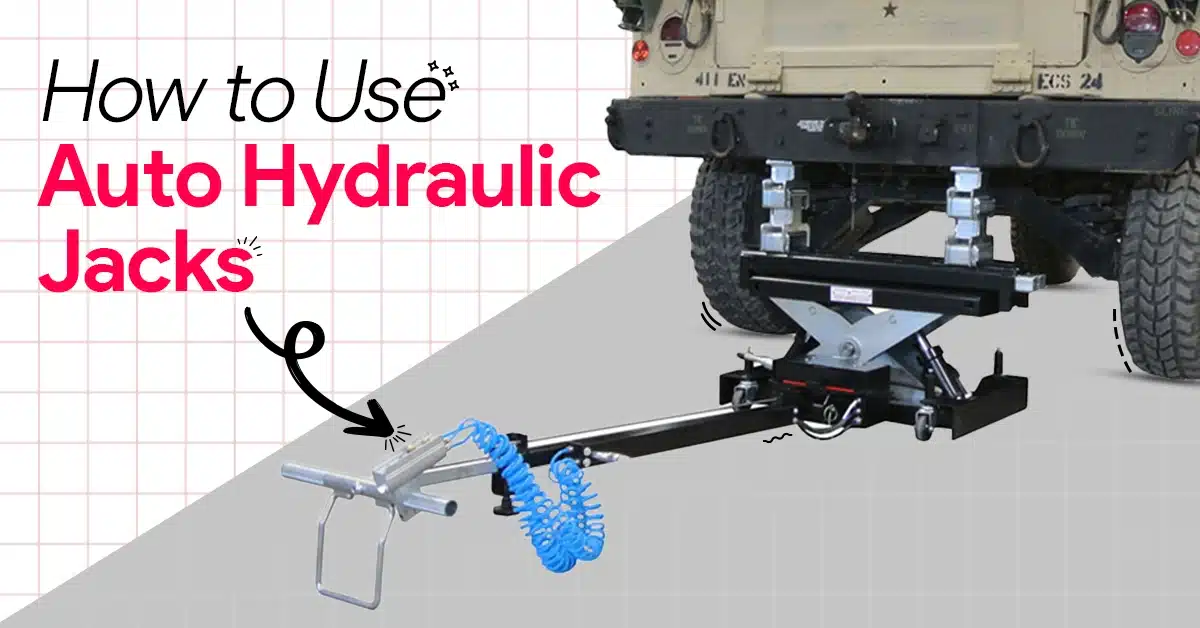Auto hydraulic floor jacks are perhaps the biggest asset you can own for the service, maintenance and repairs of your vehicles. There are following reasons for that:
- Size and Portability- Most floor jacks are designed to occupy less space, and are therefore lighter than other jacks, making them portable enough to be carried around.
- Does Not Jam- Since these jacks use hydraulic power to work, they are less likely to jam due to rust in the screw thread as unlike mechanical jacks which work by using them.
- Weight Capacity- As hydraulics generate greater lifting force, these floor jacks can lift heavier loads compared to other jacks with minimum effort using fluid mechanics.
- Lift Range- This increased lifting force allows them to lift loads to greater heights, giving them a higher lift range.
- Simple to Use- It is easier to use as its working mechanism is simple, making it a convenient choice for a range of clientele, especially do it yourself-ers (DIY-ers).
- Durability and Reliability- Because of hydraulic jacks’ fewer moving parts, and fine quality build materials like high-grade steel, they can stand the corrosion, rust, oxidation, deterioration, and wear and tear of lifting for decades to come.
- Low Profile- Hydraulic floor jacks usually have an extended and elevated reach while offering sustained and stable lift and minimal upkeep needs.
- Safety- Auto floor jacks engage automatically at different heights, lifting the entire front or rear of your vehicles without any danger.
- Maneuverability- Hydraulic floor jacks often come with roller wheels that guarantee ease and impressive mobility, while making them highly adjustable.
- Versatility and Flexibility- Some hydraulic floor jacks fit virtually any pit or ramp application due to their compact design.
How Do Auto Hydraulic Floor Jacks Work?
To understand the benefits of auto hydraulic jack, let us understand how hydraulics in jacks work. Where conventional jacks wear out easily, hydraulic floor jacks are commonly used to lift loads high and heavy with ease, safety and speed for any maintenance purpose.
Its components work in accordance with Pascal’s law (also known as Pascal’s principle, or the principle of transmission of fluid-pressure), to produce applications in a range of fields beyond the automotive industry.
But for the sake of this blog, we will only explore its mechanism in helping lift heavy duty military grade trucks and buses to smaller and lighter family cars off the ground for repairs and maintenance.
Hydraulic floor jacks are mechanical devices used to lift heavy loads and forces like trucks, sports utility vehicles, or other types of cars, among other heavyweight items. The anatomy of any auto hydraulic jack can be broken down into these main parts, namely:
- Reservoir or buffer tank
- Pump with piston or plunger
- Pump lever or handle
- Check valve
- Main cylinder or ram
- Release valve
- Handle
The reservoir or buffer tank is the physical compartment of the floor jack which holds the hydraulic fluid or pump oil. When the handle or lever of the pump with piston or plunger is mechanically lowered or raised, it builds up pressure in the adjoining compartment, i.e., the reservoir or buffer tank containing the hydraulic fluid or pump’s oil.
This applied pressure is transferred from the pump through a check valve and into the main cylinder or the ram, which extends out of the jack body creating the required lifting force and lifting the load.
How to Use Auto Hydraulic Floor Jacks?
It is relatively simple to use hydraulic floor jacks. But we must warn you that before you proceed with anything technical, please take the necessary precautions (which must come along with your product usually in the form of a manual) as dealing with these devices are quite dangerous and can be life-threatening if not used with caution.
Do not allow children to come into contact with these devices and tools, and for the safety of your car and other property, follow the instructions diligently. Now, without further ado, let us get started, shall we?
1. Make sure your car is in gear and you have got your parking brakes engaged.
2. For safety reasons, unless you are in a state of emergency, get your park parked on a flat, levelled, solid surface like concrete and not grass and dirt.
3. Check out the jack points- a point on the chassis which contains the frame carrying all suspension and power components, in the undercarriage of your vehicle that is underneath the main cabin of your car- and distinguish between good and bad points.
4. For distinguishing between good and bad jack points, a preliminary inspection of your car’s undercarriage (and in case you are still confused, a quick Google Search) is sufficient- this will allow you to fix your auto hydraulic jack to a point that is designed to handle a lot of weight.
5. Once you have settled on your jack point that can jack up your whole car (or parts- rear or back) at once safely and easily, move the jack into place and lift your car steadily.
6. Once this is accomplished you can repeat the process for all the four corners of your car (or particular portions, like tires for replacement) to suspend it at the same level and work on its repairs and maintenance with ease.
Best Auto Hydraulic Floor Jacks to Use in 2024
You will realize that while using hydraulic floor jack stands become a necessity for their reliable and safe suspension. But it is an expensive investment. That is why Stan Design Inc. came up with hydraulic floor jacks that do not need stands. Check out our selection of their top auto hydraulic floor jacks.

